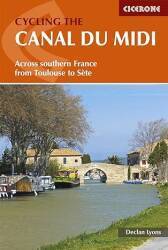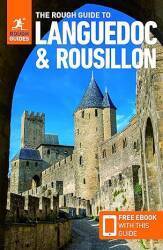
Canal du Midi
From Trèbes to Caux-et-Sauzen
| 23.2 | kilometers |
| 10 | locks |
| 30.24 m | elevation gain |
We had breakfast on board, and then got started.
We would pass through three single locks
and then a double lock before arriving at
the fortified city of Carcassonne.
We would get lunch there and explore the city.
In the afternoon there would be another three single locks,
another double lock, and then we would tie up for the night
near a small village that's just a small cluster of houses.
We had pastry and oranges from the previous day for this morning's breakfast, along with freshly baked bread from the Trèbes bakery.
Like the locals, we always went to the local boulangerie or bakery for hot, freshly baked baguettes.
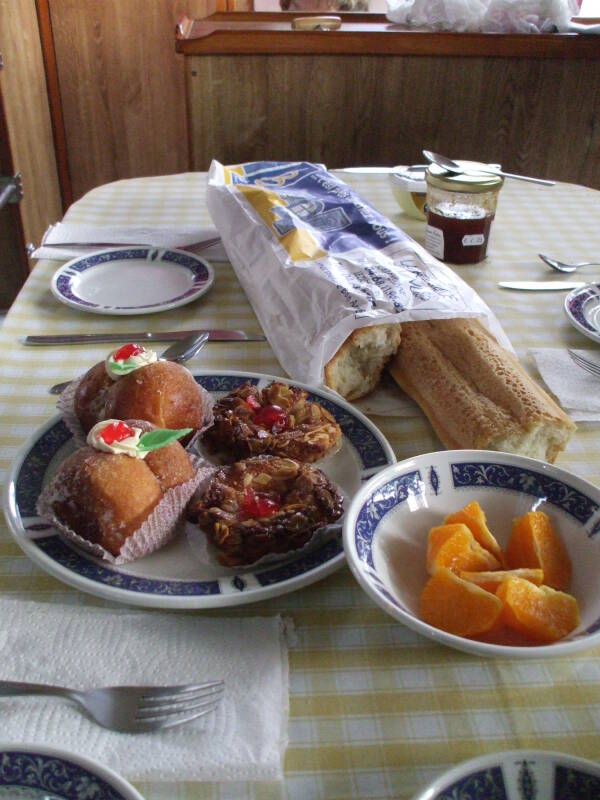
A swan took the place of the usual ducks to send us on our way.
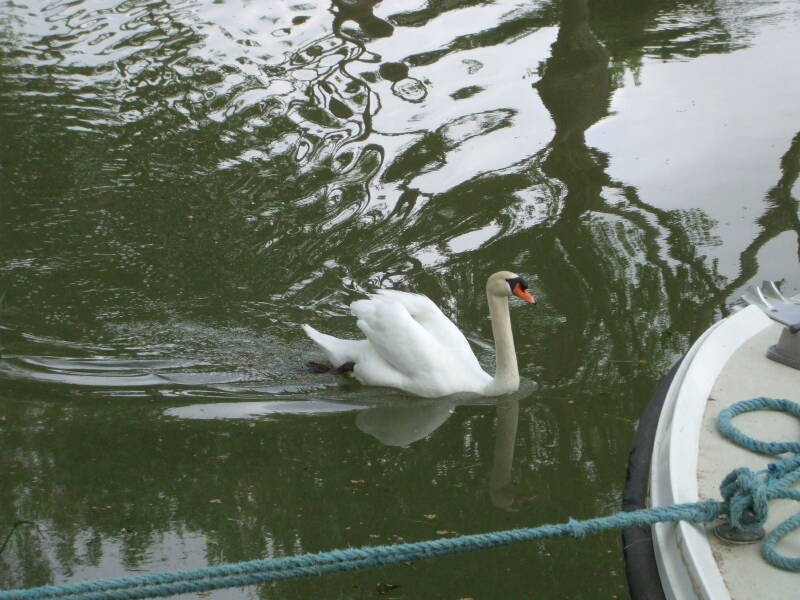
A high aqueduct took us across a small river on the way out of Trèbes.
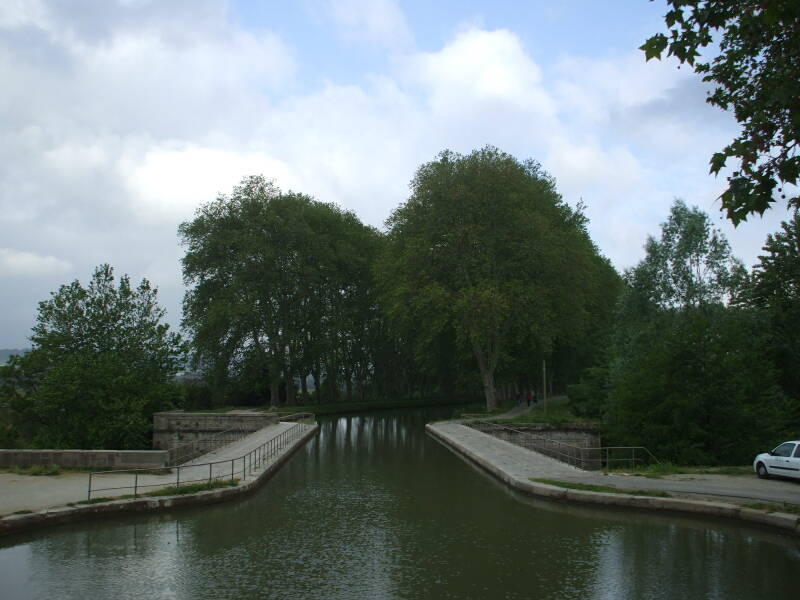
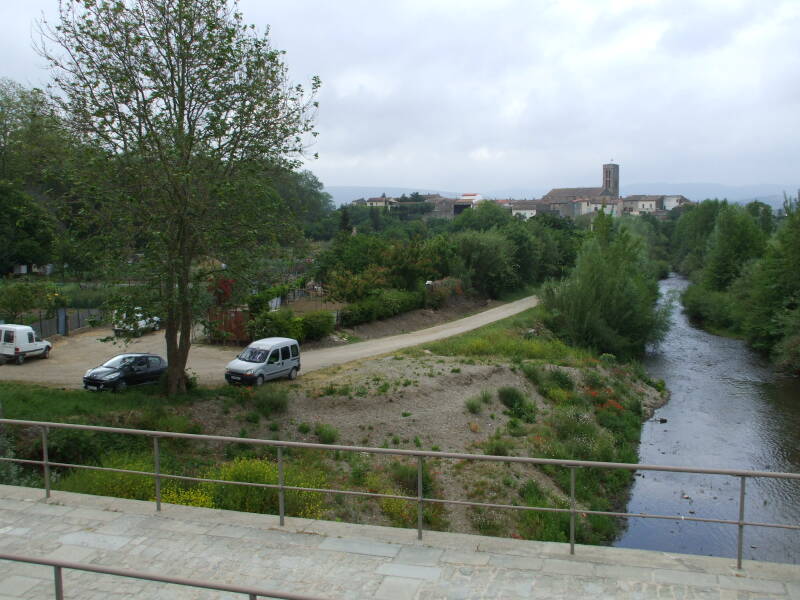
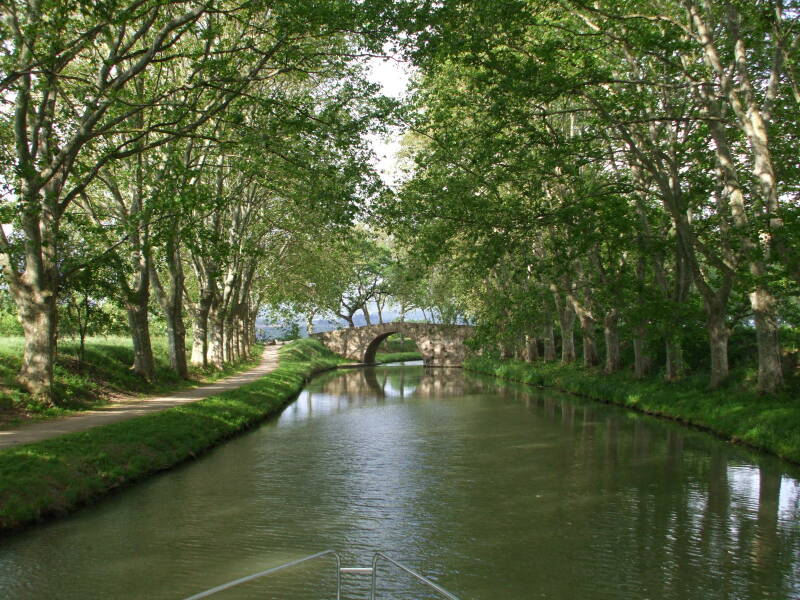
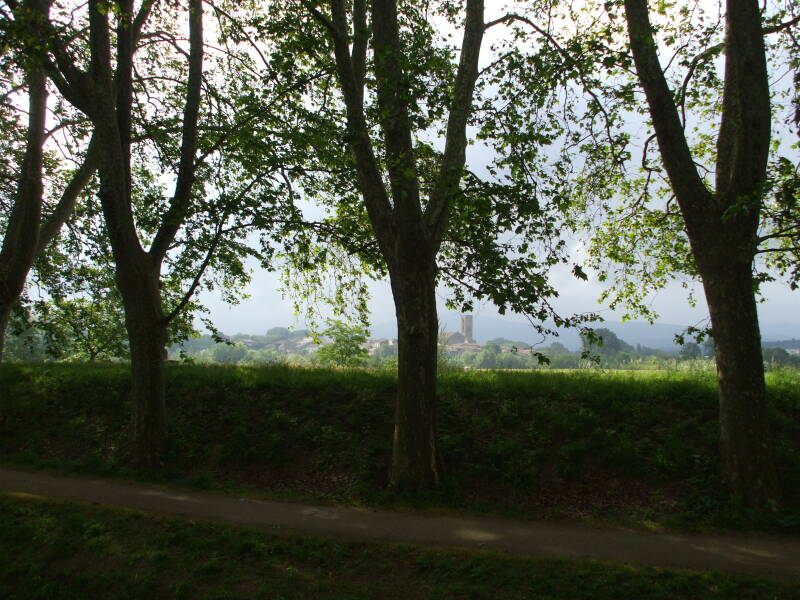
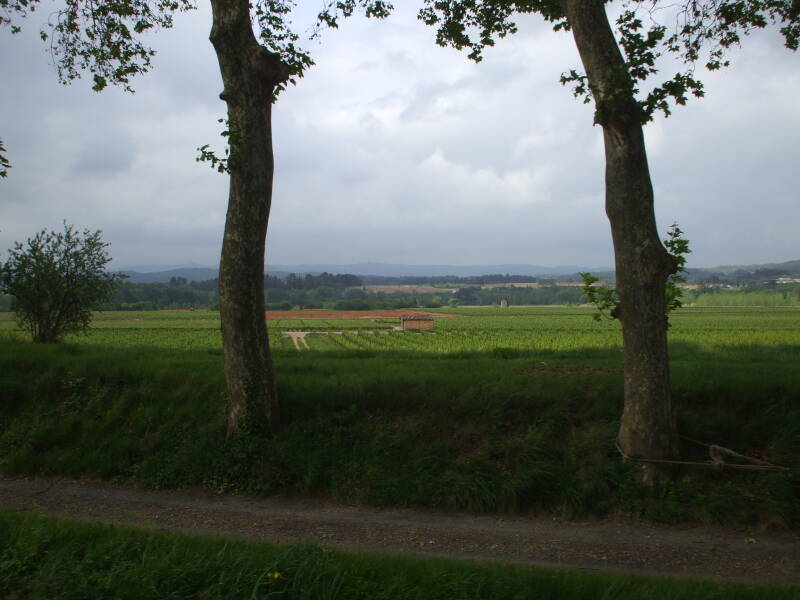
The canal requires constant maintenance.
The banks slump, while silt, leaves, and other debris build up on the canal floor.
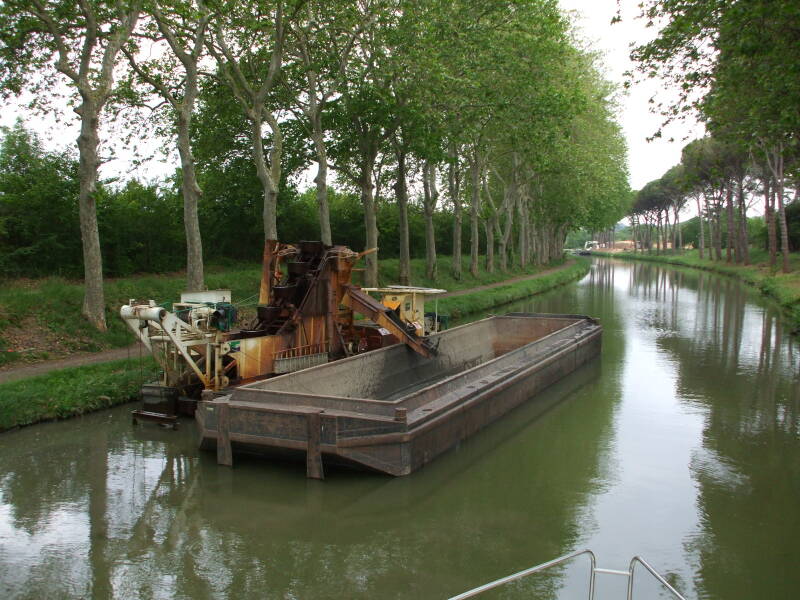
Dredging operations keep the canal in shape.
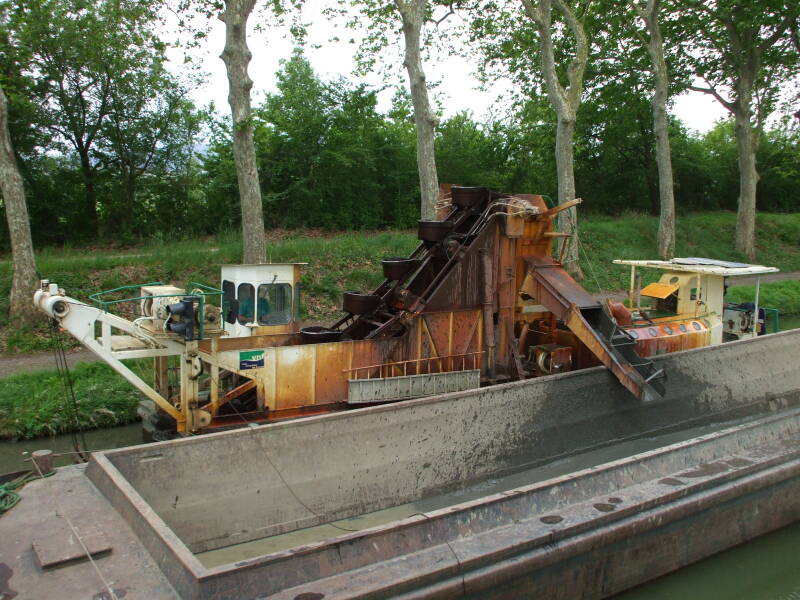
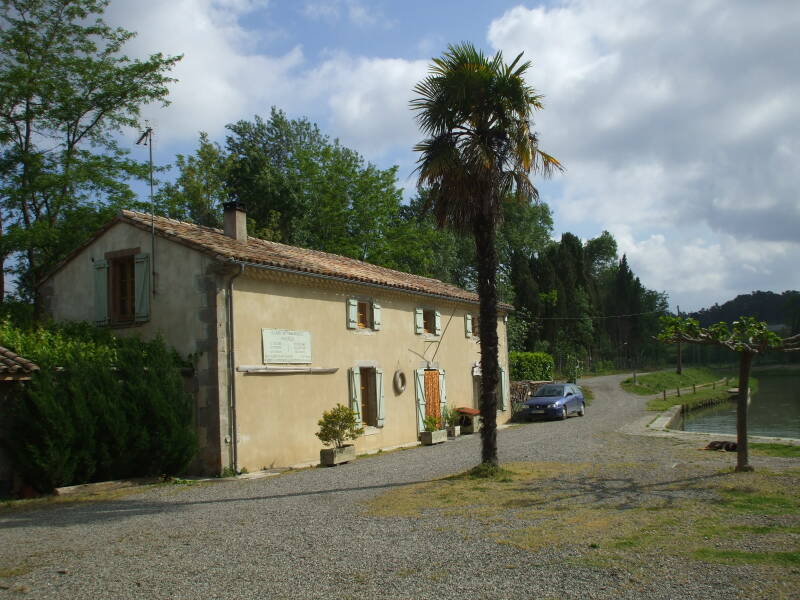
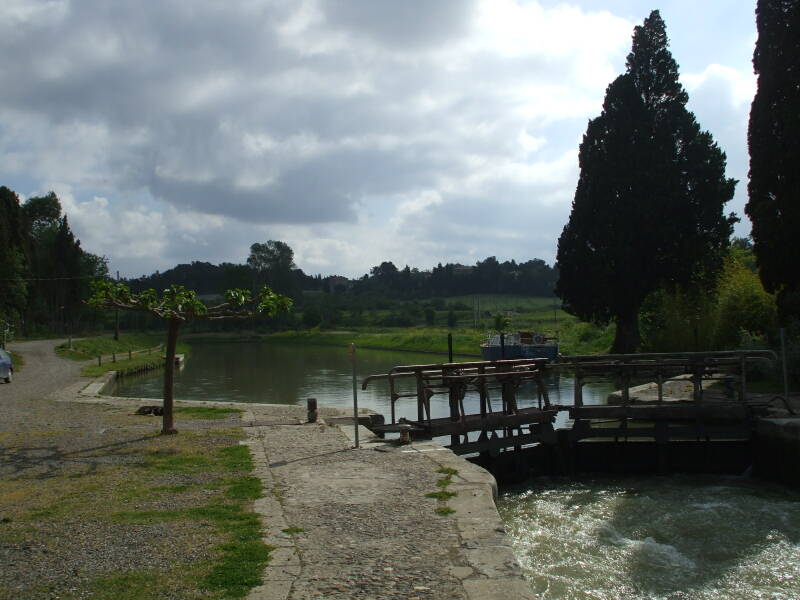
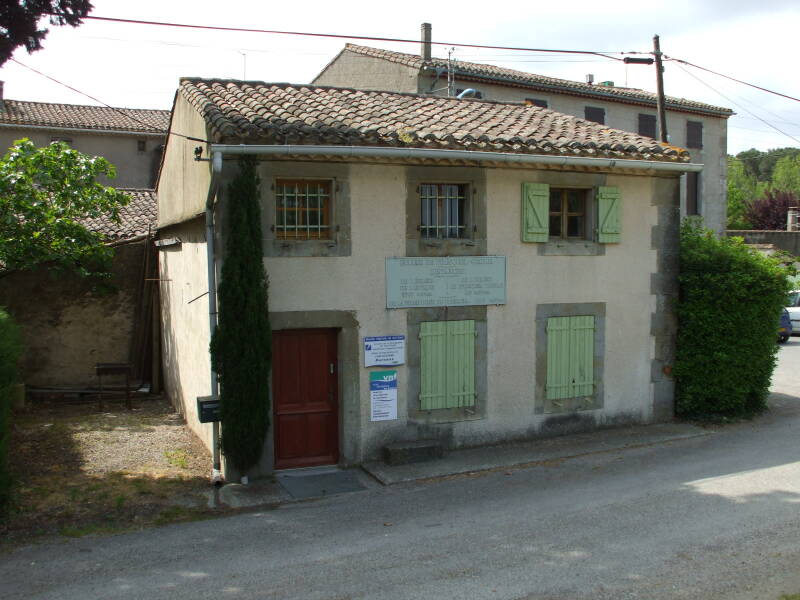
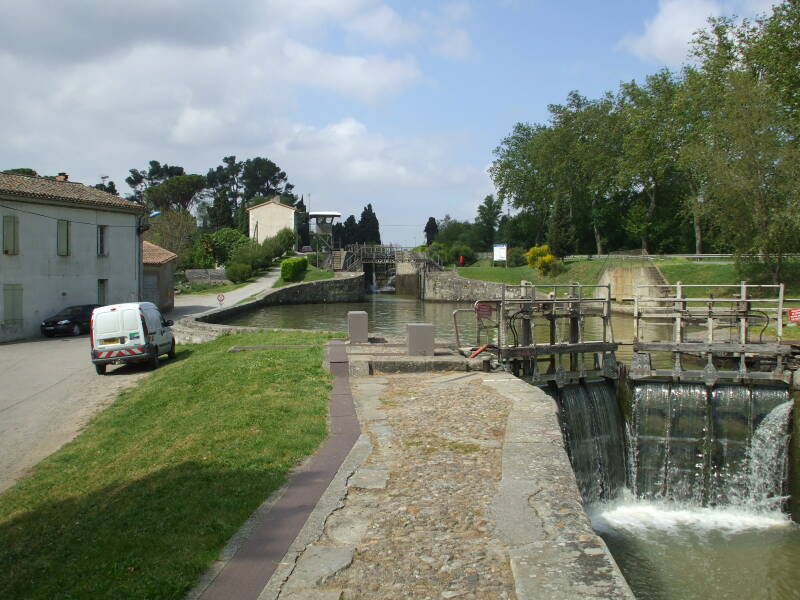
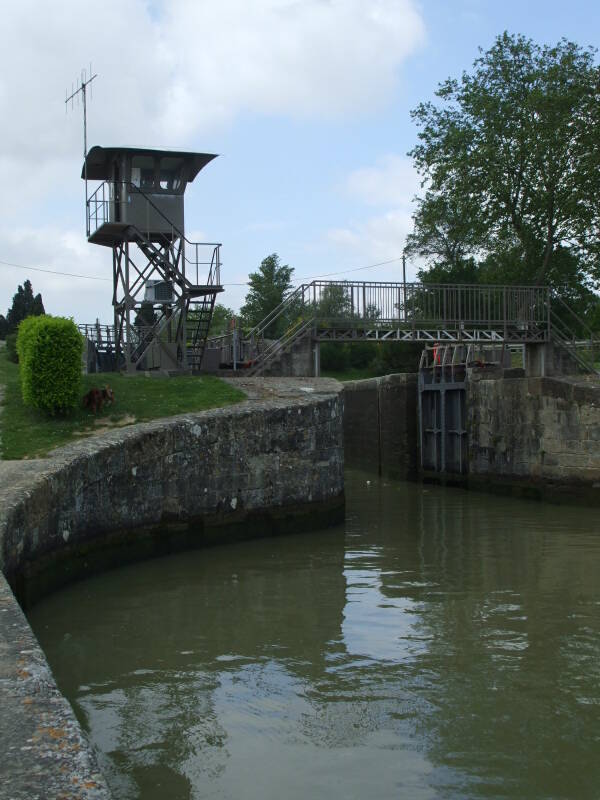
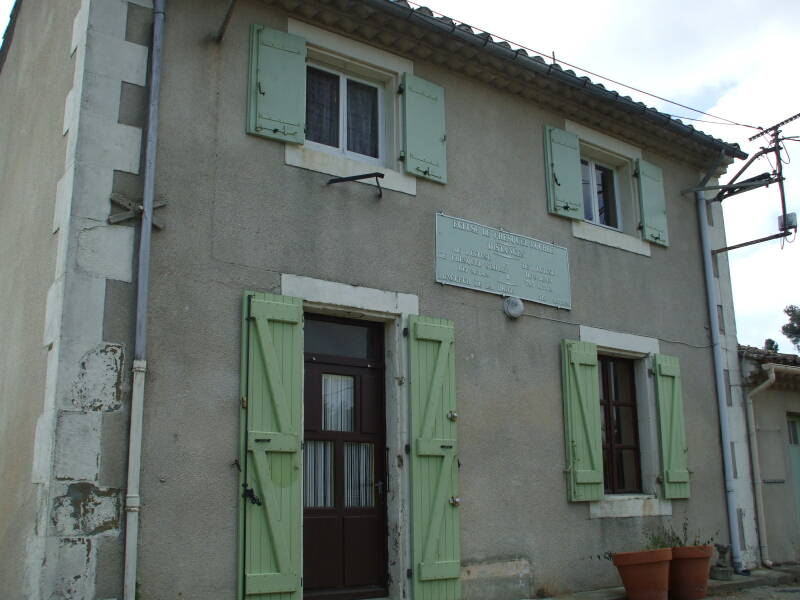
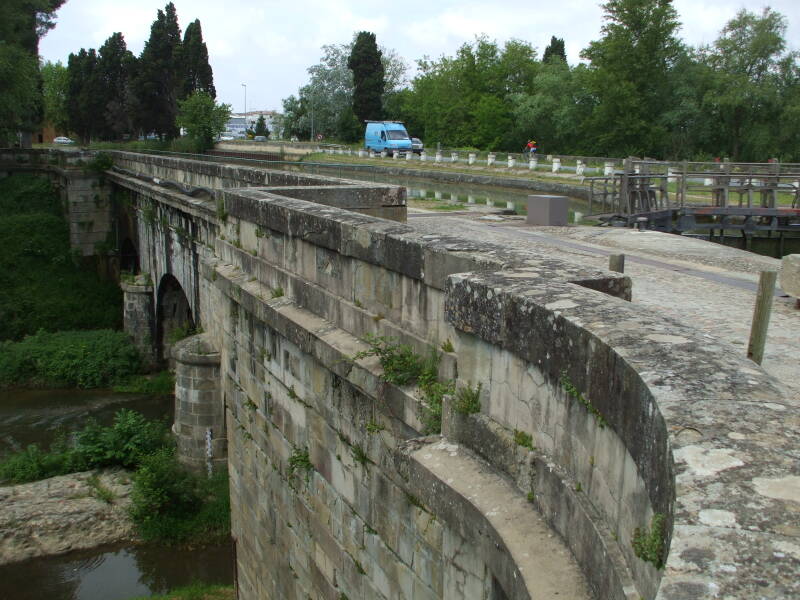
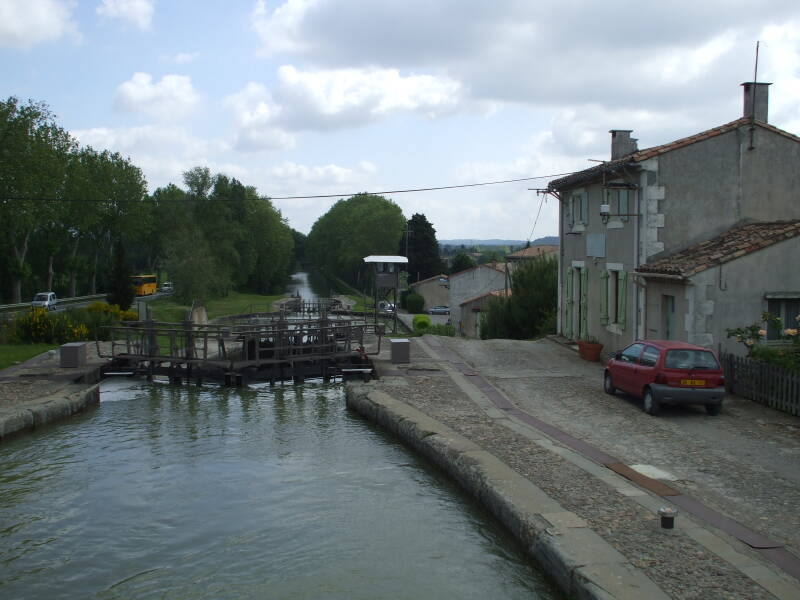
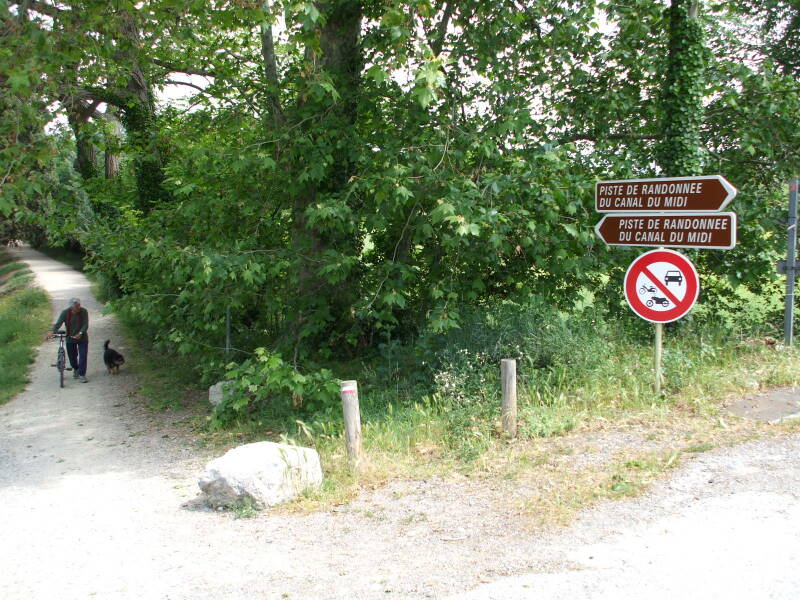
Carcassonne
The site of Carcassonne has been occupied since the Neolithic, around 3500 BCE. It's in the plain of the Aude river, putting it on the overland trade route between the Atlantic and Mediterranean.
The Romans fortified the hilltop around 100 BCE, and created the colonia of Julia Carsaco, later called Carcasum.
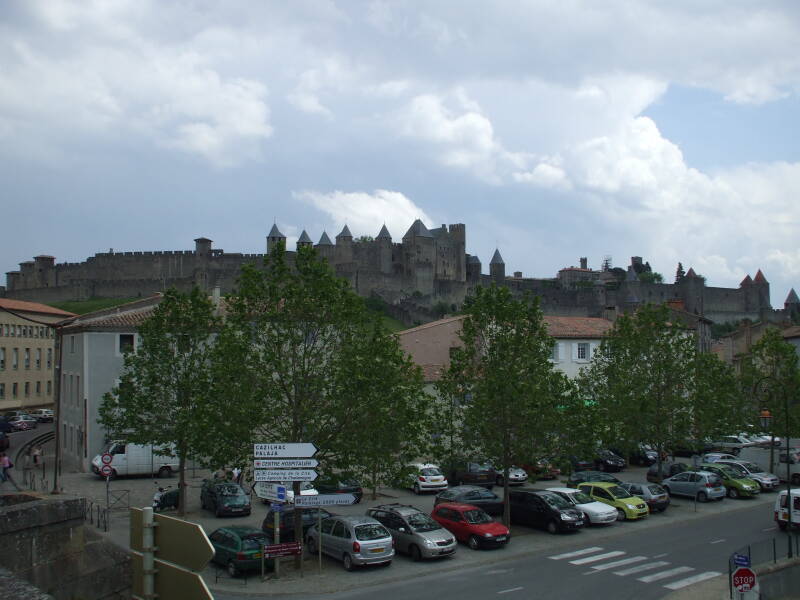
The Romans pulled out and officially ceded the region to the Visigothic king Theodoric II in 462. He had already controlled Carcassonne since 453.
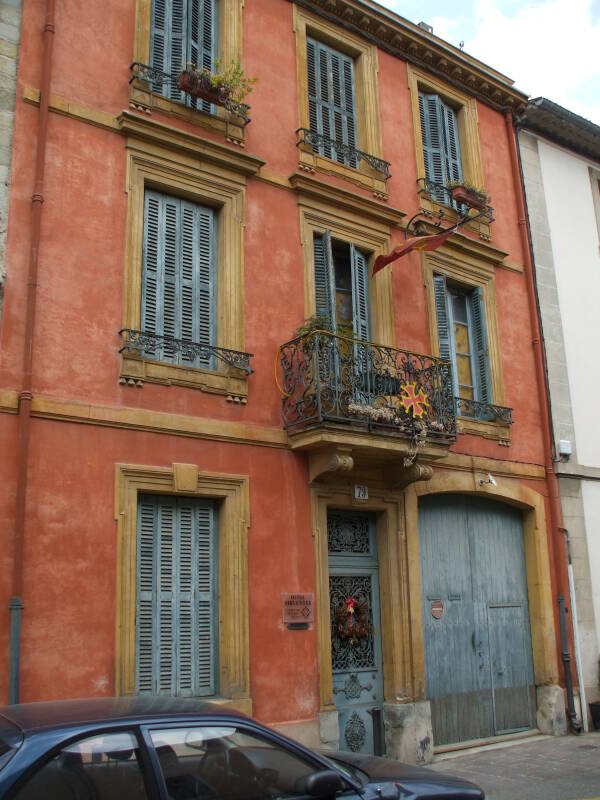
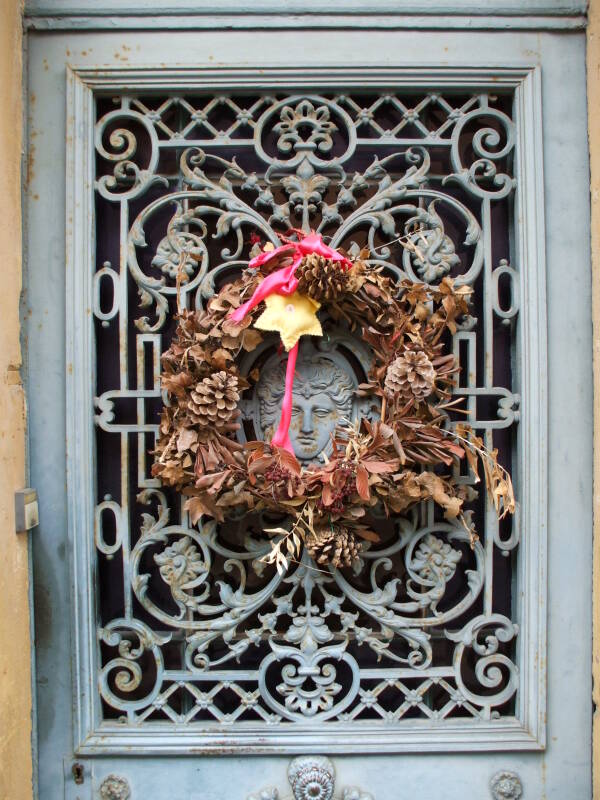
After the Massacre at Béziers and the slaughter of the Cathars and everyone else in Béziers, the crusader army marched to Carcassonne.
It took the army six days to march to Carcassonne, arriving on 1 August 1209.
It was a short siege. By 7 August the crusaders had cut the city's water supply. Carcassonne surrendered on 15 August.
The traditional story is that the people weren't killed, but they were forced to strip naked and leave their city.
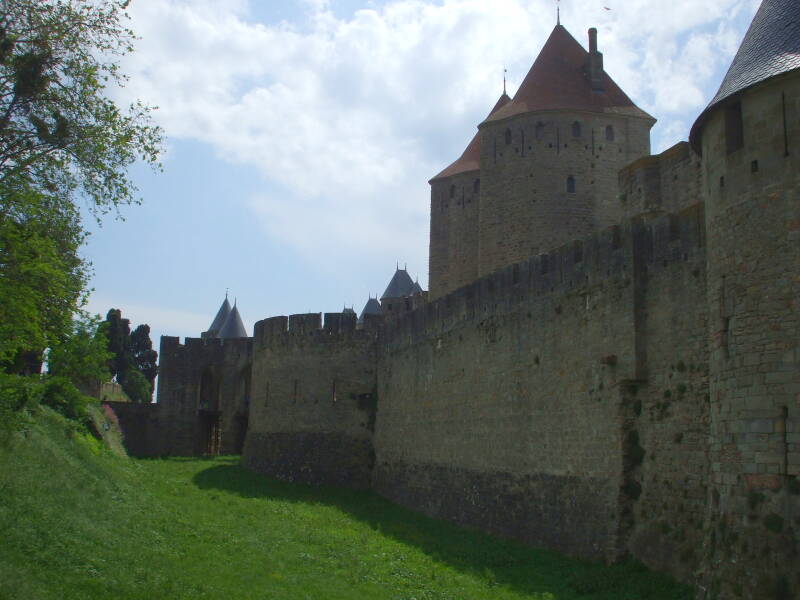
The city is enclosed in two outer walls with 53 towers and barbicans.
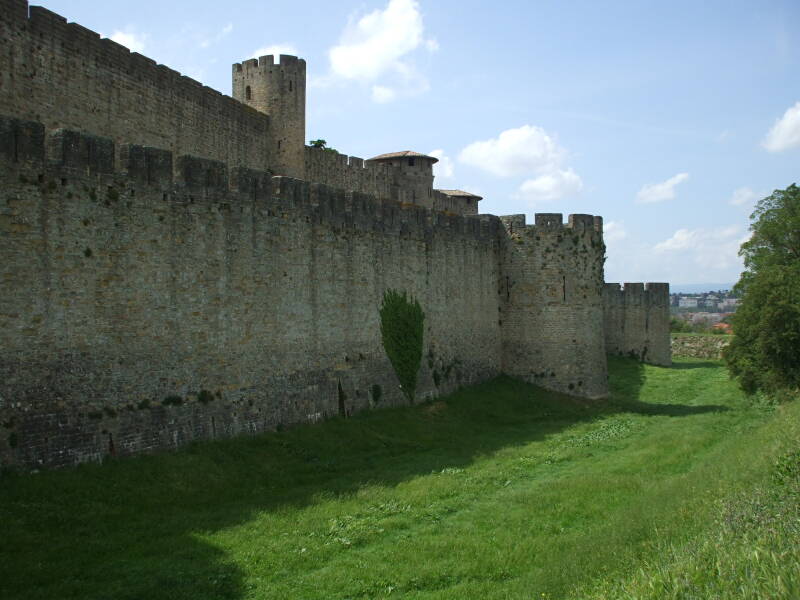
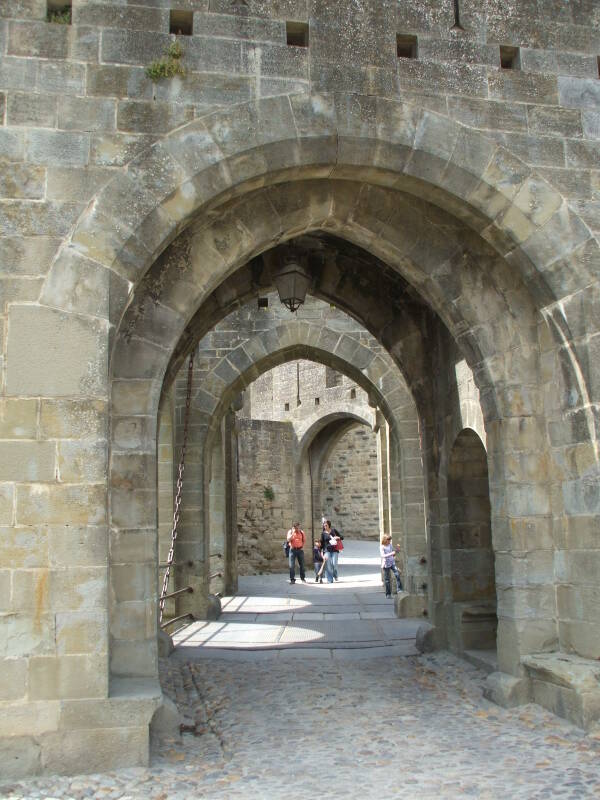
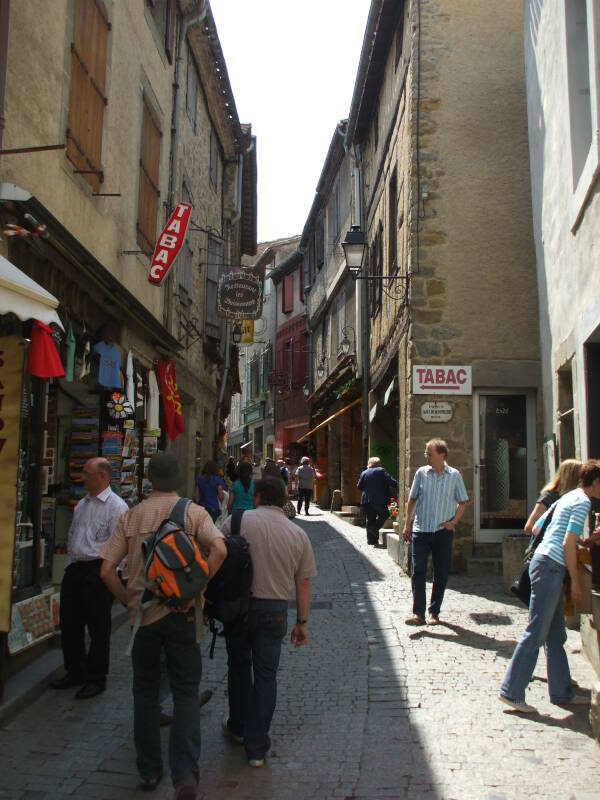
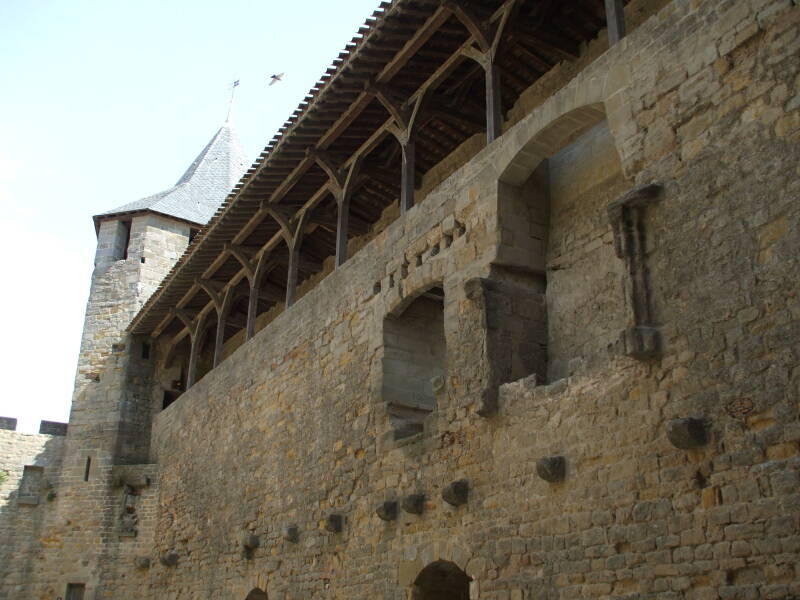
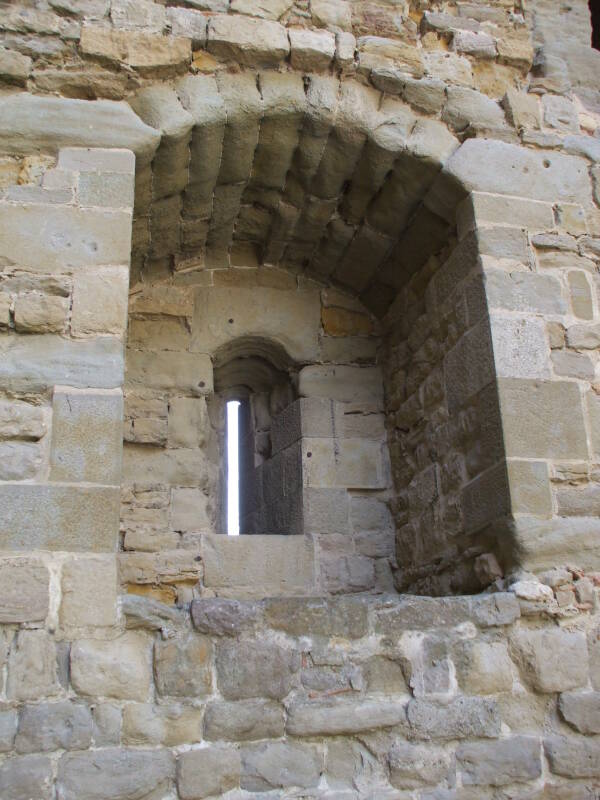
The antiquarian architect Eugène Viollet-le-Duc directed the reconstruction of Carcassonne in the 1850s.
His work has been heavily criticized, especially for the roofs. Viollet-le-Duc put conical slate roofs everywhere. This was in violent contrast to the flat roofs with Romanesque tiles used on local castles.
Viollet-le-Duc's conical slate roofs were like those from the fortifications of northern knights in the Albigensian Crusade.
His "restorations" would be familiar to the genocidal invaders of the crusade, but not to their victims.
They do, however, provide opportunities to buckle one's swash.
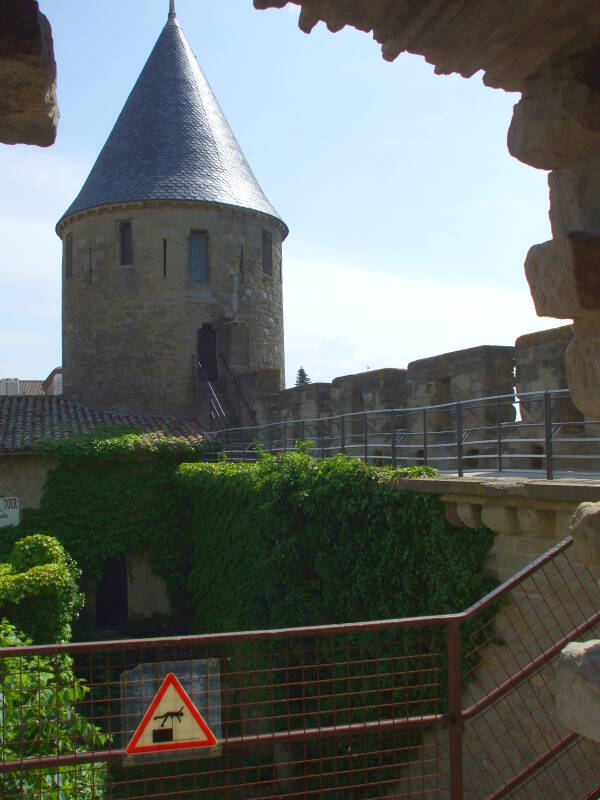
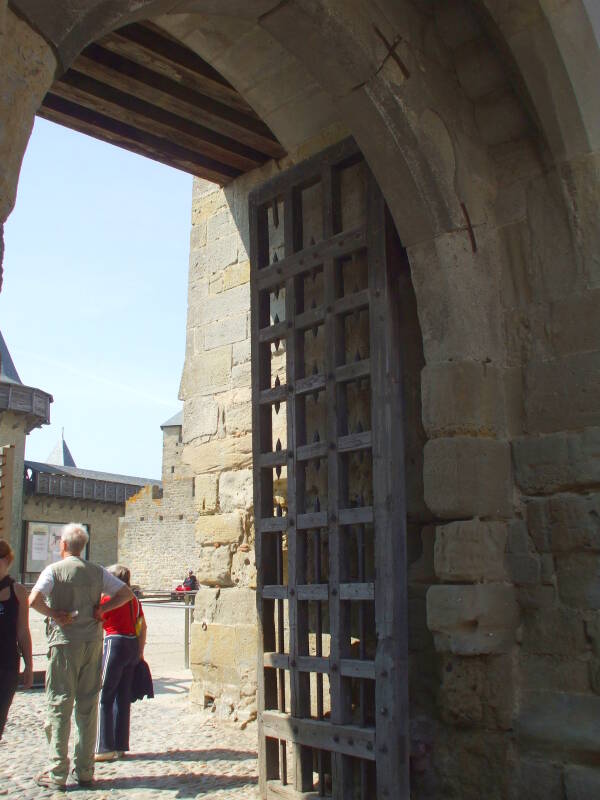
The highlight of our visit to Carcassonne was the Basilica of Saints Nazarius and Celsus.
The earliest church here was built during the 6th century CE.
There was some mention of it in 925, when the bishop transferred the Episcopal See from Saint Mary and Savior's Church in the surrounding country to the Church of Saint Nazaire within the city walls.
In the 1100s the early church was replaced by a Romanesque structure. Today only its nave remains.
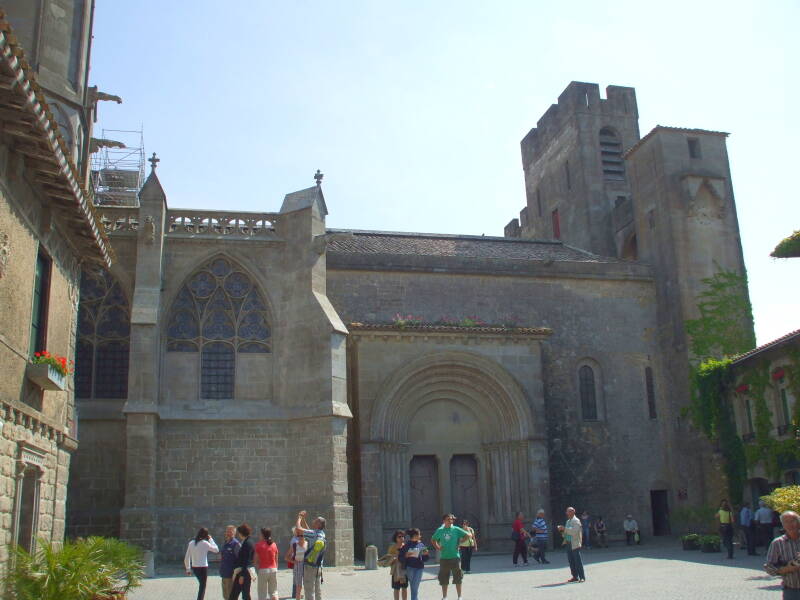
The rose windows date from the 13th and 14th centuries.

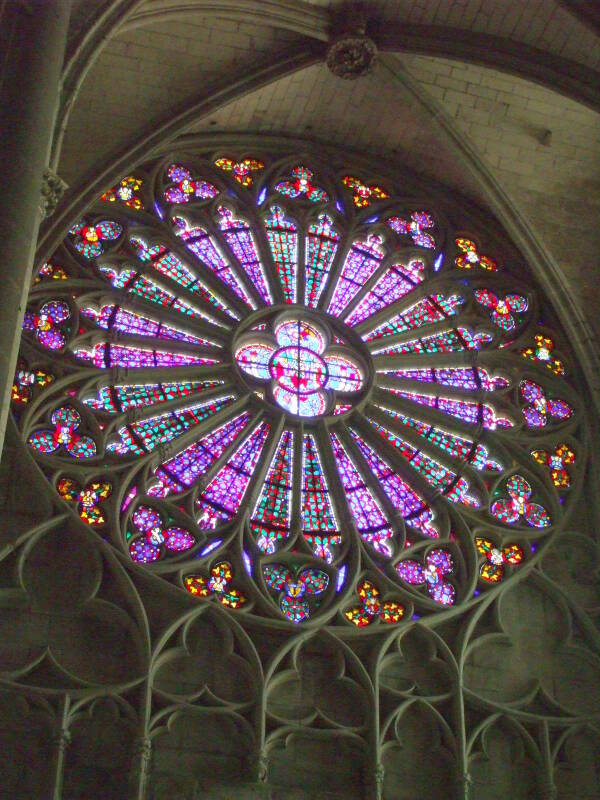
The church was redefined as a lesser basilica in 1898 by Pope Leo XIII.

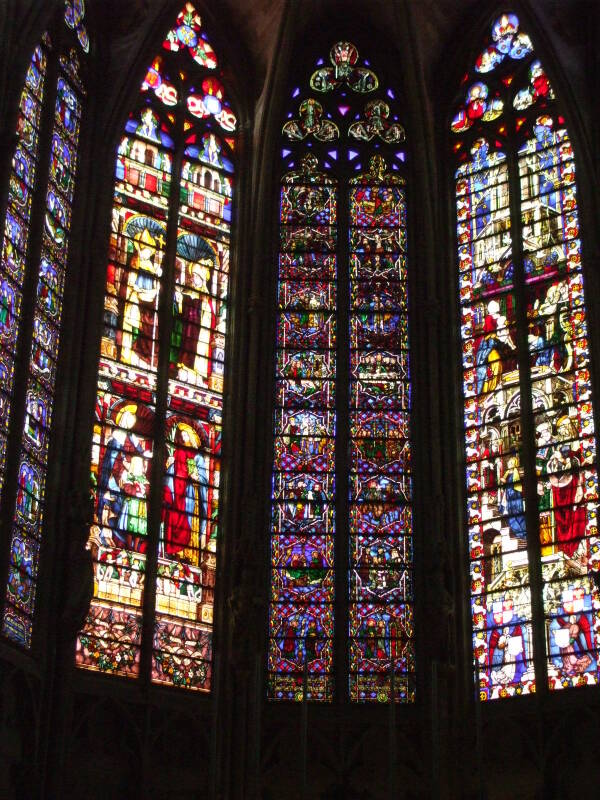
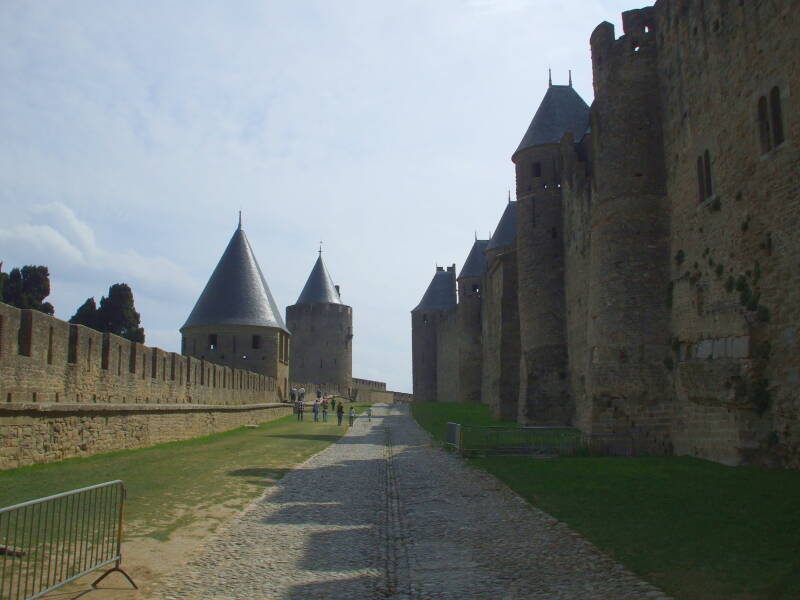
We stopped at a grocery store on the way out of Carcassonne. We needed to buy food for our dinner that night, and lunch the next day, both of which would be on board our boat.
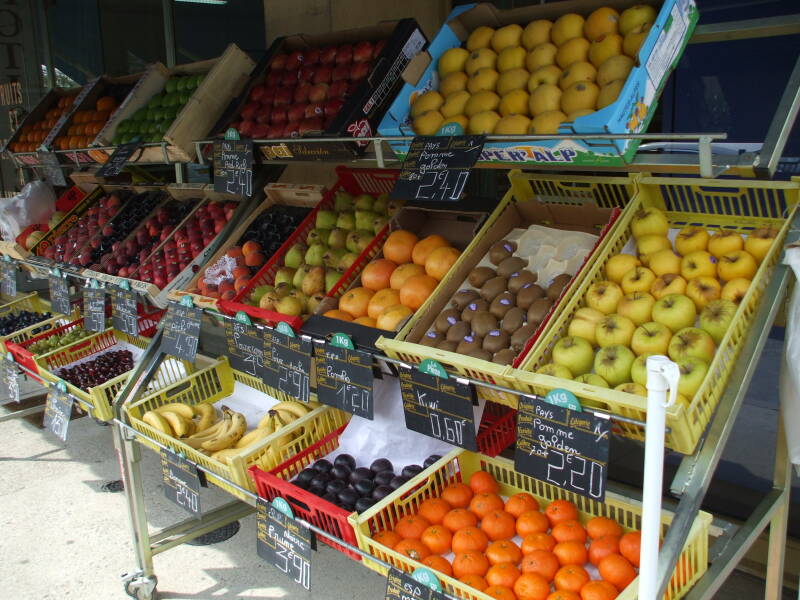
We continued west on the Canal du Midi, keeping our boat inside the canal and hoping that local drivers kept their cars out of the canal.
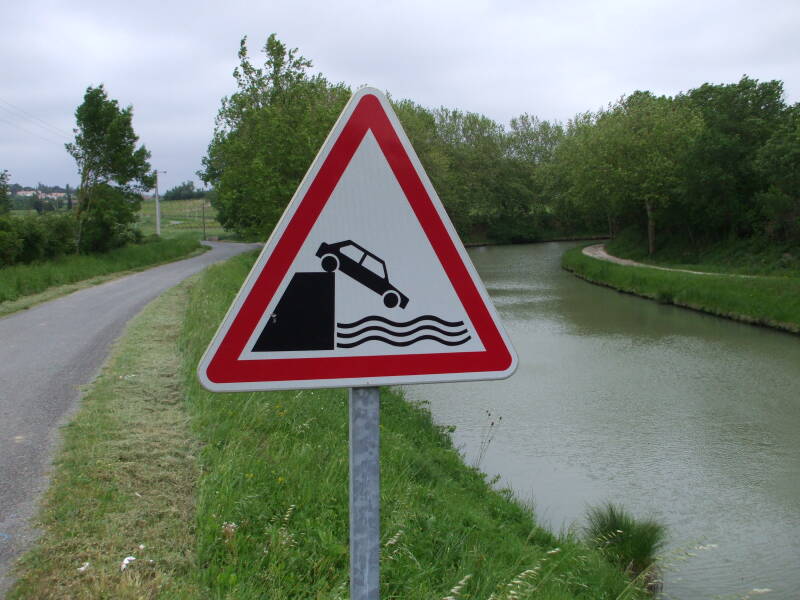
Tomorrow would be our last day on the canal, finishing our trip at Castelnaudary.
